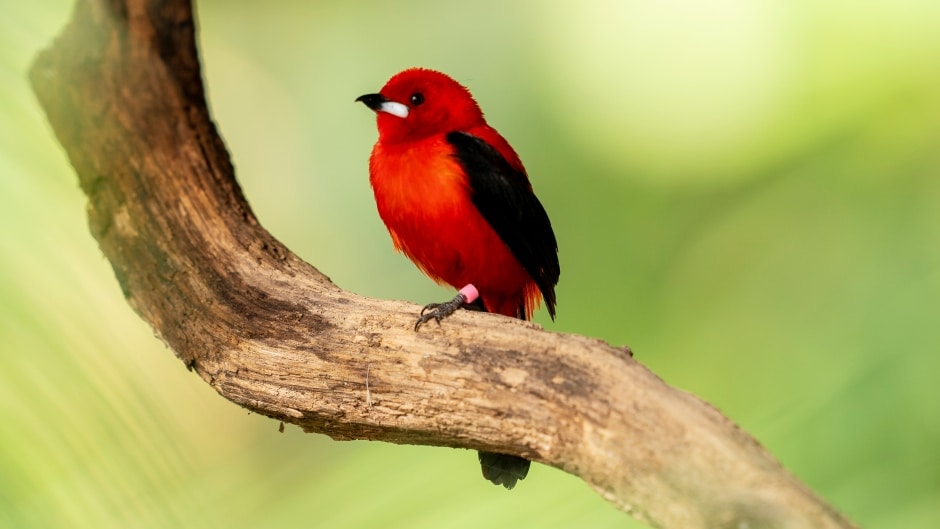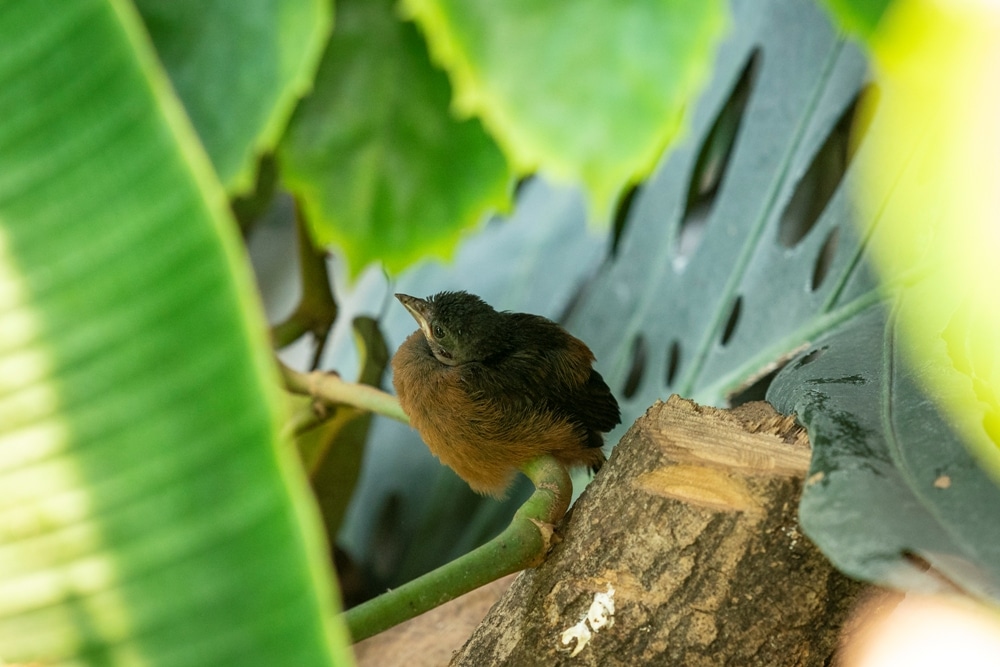Brazilian tanager
Common Name: Brazilian tanager
Scientific Name: Ramphocelus bresilius
This Brazilian tanager is endemic to coasts of eastern Brazil and northeastern Argentina. Although the males are a vibrant red with black wings and tail feathers, the females are mainly brown with an orange breast
Fast Facts
-
Status
Least Concern
-
Size
Height: 18 cm
-
Weight
27.9 - 35.5 g
-
Gestation
13 days
-
Young
2-3 eggs are laid
In the wild
Brazilian tanagers are omnivores. They eat a variety of foods including fruit, seeds and insects.
This species is found in Brazil and Argentina. They inhabit a range of habitats including shrubland, wetlands, the edges of woodlands, parks, and gardens.
Brazilian tanagers weave nests of grasses, vines and other fibres. They build them in bushes, low trees or in tufts of marsh grass. They lay two or three eggs which are greenish-blue with black and grey markings. The chicks are fed by both parents.
Shiny cowbirds often lay their eggs in the nests of Brazilian tanagers, so the tanager parents unwittingly end up caring for the cowbird chicks.
This species is not considered globally threatened and are shielded from many potential threats. This is because they are found in many protected areas and can survive in urban areas. In addition, they can live in a variety of habitats including disturbed habitats.
Brazilian tanagers, like most small tropical birds, are vulnerable to predation of their eggs and young by snakes and small cats, such as the ocelot and the margay. In some unprotected areas, Brazilian tanagers, are caught by bird trappers to be sold to the pet trade.

